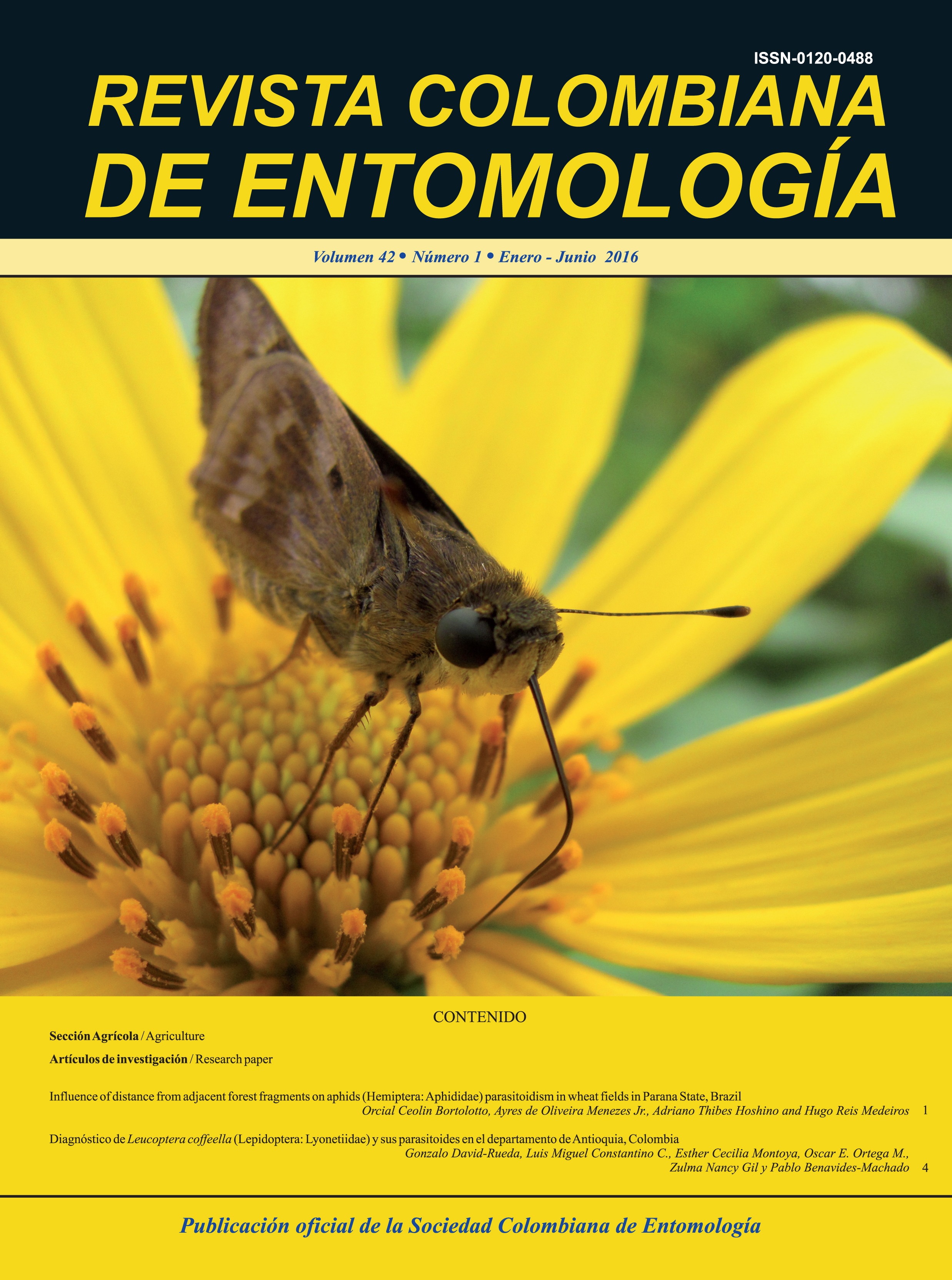Efficacy of entomopathogenic fungi to control Leptopharsa gibbicarina (Hemiptera: Tingidae) in oil palm
Main Article Content
Leptopharsa gibbicarina, is considered an economically important pest in Colombian oil palm plantations. Experiments on pathogenicity and virulence of the fungus Beauveria bassiana (CPBb0404) Isaria fumosorosea (CPIf1001) and Purpureocillium lilacinum (CPPl0601) were evaluated on L. gibbicarina adults coming from a rearing unit. Pathogenicity of isolates was tested in laboratory. Adults of L. gibbicarina were individualized in Petri dishes and sprayed with 0.2 ml of a suspension of 1 x 107 conidia/ml. Virulence was evaluated in two stages under a shade house, first palm leaves were infested with L. gibbicarina adults, and treatments were sprayed at a dosage of 1 x 1013 conidias/ ha, then were tested at different dosages (5 x 1012, 1 x 1013 and 1.5 x 1013 conidia/ ha). Finally a field experiment was conducted to test field efficacy. Results of laboratory experiment showed that the three fungi are pathogenic to L. gibbicarina (> 96% mortality). In the virulence test, I. fumosorosea, B. bassiana and P. lilacinum caused mortalities of 74.3%, 92.8% and 100%, respectively, being statistically significant differences (P = 0.05). However, when different dosages were tested, no statistical differences were found. Fungi then were evaluated under oil palm plantation conditions, and no significant statistical differences were detected. This study allows to recommend P. lilacinum to be applied in an integrated pest management program to control L. gibbicarina, due to its high virulence (> 80%) and quality control attributes in commercial production.

This work is licensed under a Creative Commons Attribution-NonCommercial-ShareAlike 4.0 International License.
Authors retain the copyright on their work and are responsible for the ideas expressed in them. Once a manuscript is approved for publication, authors are asked for a publication license for the term of legal protection, for all territories that allows the use, dissemination and disclosure of the same.





